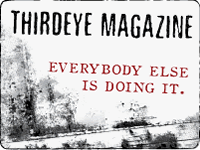In addition to marking locations for resources, the Indians mark areas plentiful with game animals and mythological animals with deep spiritual meanings. Often the homes of these spiritual animals – such as two-headed jaguars – are strict no-hunting zones and contain the sources of watersheds and areas of high biodiversity the Indians don’t want disturbed.
PROTECTING CULTURE
Perhaps the most exciting aspect to this fusion of traditional know-how and technology is the Indians’ newfound ability to document their history. The allure of Western life often causes younger generations to move to cities, severely threatening the continuation of indigenous culture. But now the technology-thirsty youth have regained an interest in protecting the forest and bonding with their parents and grandparents.
“The White men have the Bible and other books to teach their kids about their ancestors. We now have our map to teach our children our history.”
In the process of creating the maps, Indians began tape-recording the stories of their elders and used the recordings to make their own educational materials. To the Indians this is very important, because it makes their culture relevant to the new generation and provides an easy way for older generations to pass on their knowledge which would have otherwise been permanently lost. The maps have completely revitalized cultures on the verge of extinction.
“The White men have the Bible and other books to teach their kids about their ancestors. We now have our map to teach our children our history,” Apalai chief Joao Arana was quoted as saying in an ACT report on the project.
THE WAY OF THE FUTURE
The most important thing about ACT’s efforts is that the decision to make the maps was made by Indians – the nonprofit group merely provides the methodology. Currently, ACT has ambitious plans to map at least 100 million acres of rainforest and they’re making headway. One of their chief cartographers, Wuta of the Trio tribe in the northeast Amazon, has personally been in charge of mapping 20-million acres. He joined the project after a failed attempt to live in the city that ended with him back in the forest picking up his former life more ambitiously than ever.
There is hope that this model of empowering indigenous people to have the wherewithal to protect their land and preserve their culture will spread to other conservation efforts as well. Plotkin’s Amazon Conservation Team is just one example of a way that technology and nature may coexist. Across the globe, advances in biomimicry – that is, using nature as a model for technology – and green chemistry demonstrate that technology is simply a tool. When put to good use, it can heal just as well as it destroys.
Pages: 1 2





No Comments so far ↓
There are no comments yet...Kick things off by filling out the form below.